It’s impossible to ignore nature in Big Sur. "Many tiny jeweled violet flowers along the path of a living brook that looked like Blake’s illustration for a canal in grassy Eden… titanic cliffs that Wordsworth mentioned in his own Sublime, great yellow sun veiled with mist hanging over the planet’s oceanic horizon," wrote poet Allen Ginsberg of the locale, on the central coast of California.
But that which makes the area so attractive-its redwood forests, rock cliffs, and oceanfront access-also makes it a challenge for construction, a fact to which most homeowners remain oblivious in their happy haste to create a place to watch the waves. "Most people in Big Sur didn’t grow up here. All they want to do is to look at the ocean," explains Mary Ann Schicketanz of Carmel architecture firm Carver & Schicketanz, with more than a hint of exasperation. "They’re not familiar with the problems you have with building directly on the ocean, like glare and high winds. There are a lot of site constraints we educate clients on."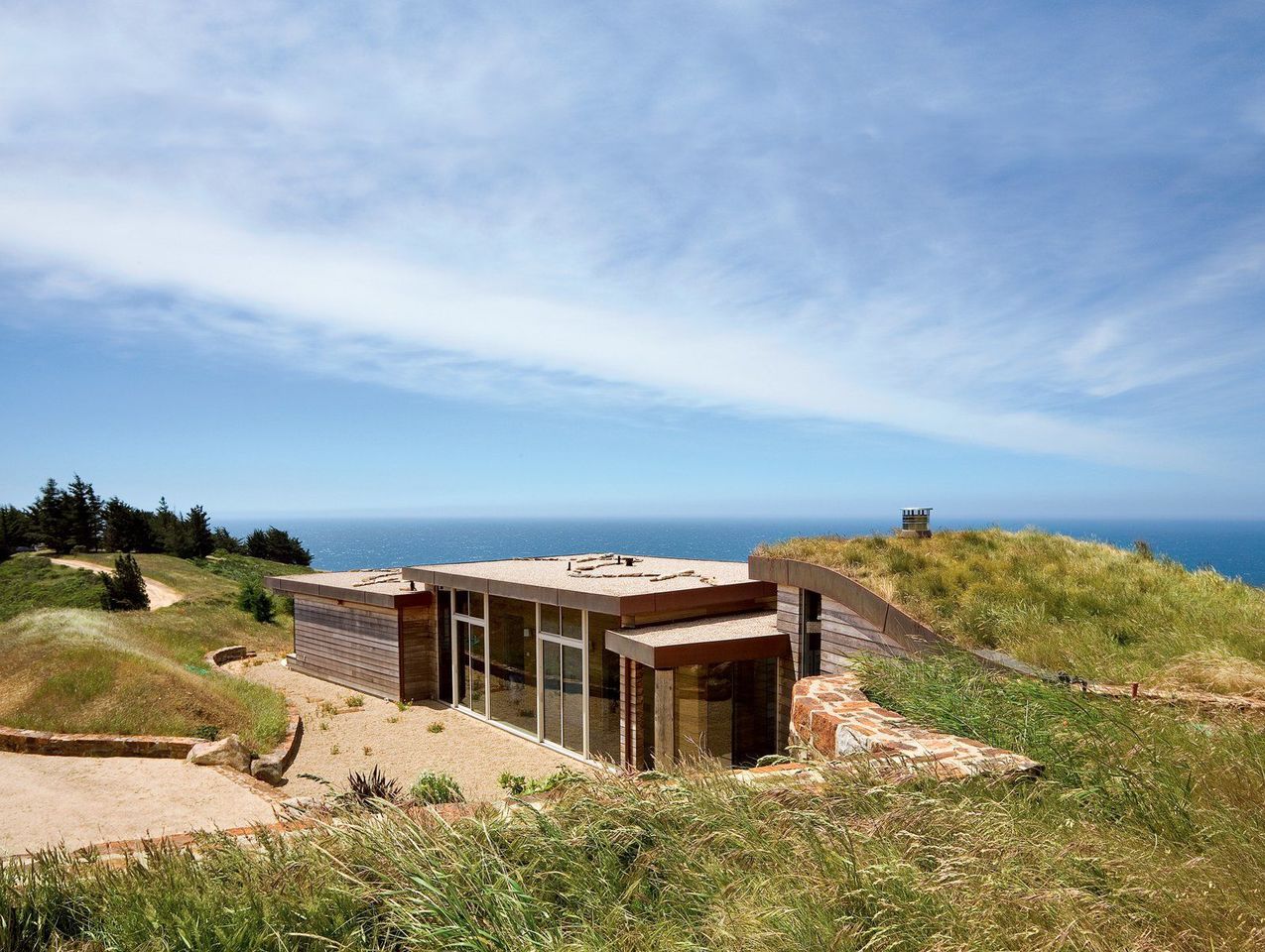
Architect Mary Ann Schicketanz created a 1,900-square-foot home in Big Sur, California, that hugs its hillside site.
Such was the case for Venice, California, resident and writer Langka Treadwell and her husband, Zach, also a writer and film producer, who bought a piece of property in Big Sur and hired Carver & Schicketanz to build them a vacation home. Though the Treadwells are "committed to the environment," as Langka says, their first thought wasn’t to build a green house. Instead, through discussions with the architects-whose practice is built on the desire to "be as least disruptive to the landscape as possible"-and a growing understanding of the site constraints, sustainable decisions easily evolved. In addition to basic environmental considerations, other building restrictions from the notoriously difficult California Coastal Commission and local no-growth policies limited construction to a tiny parcel of land on the Treadwells’ 70-acre plot.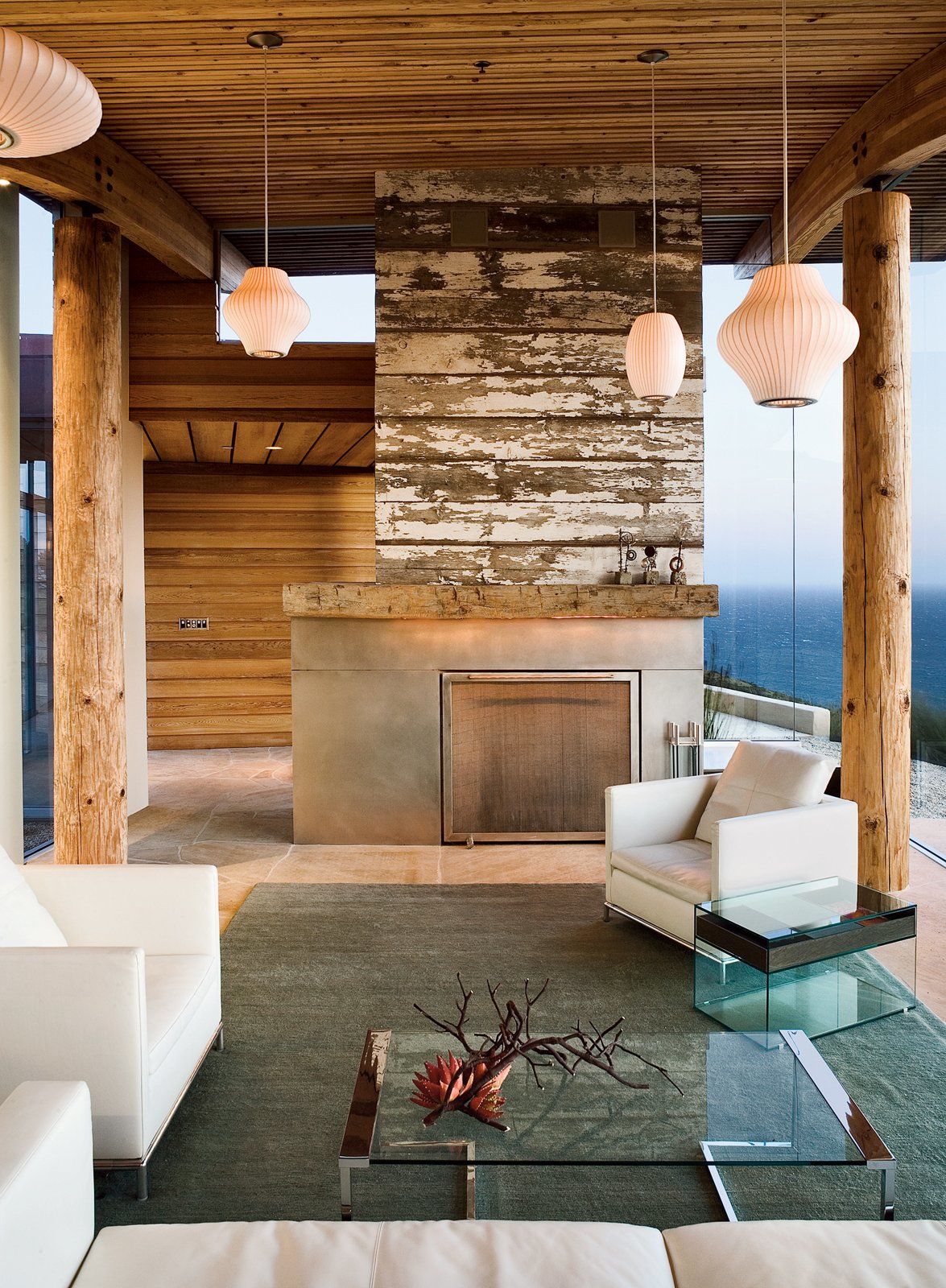
A reclaimed-wood fireplace is a defining feature in the living room.
To work within these parameters, Carter & Schicketanz cut a wedge into the hillside, then backed the home’s retaining wall against the open swath of earth. The result is that, unlike in much of the area-where, as Schicketanz states, "you see water tanks littering the landscape"-all of the home’s utilities are hidden underground, including the propane tanks, septic system, and water tank.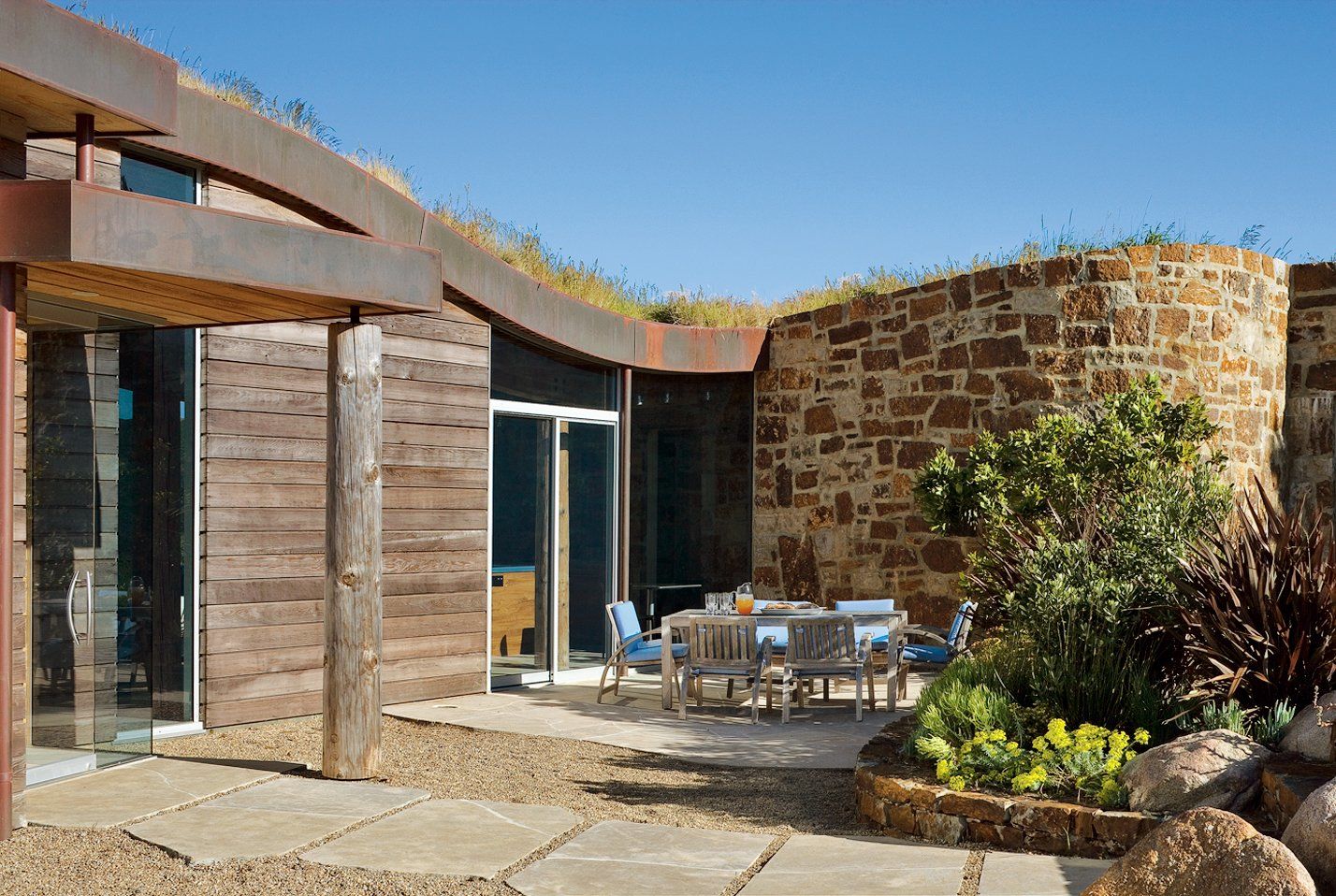
The structure sits lightly on a stone patio that cuts into the hillside site.
From the road, the house appears as an undulating verdigris swoosh in the landscape, a visual enhanced by the green roof that blends into the surrounding two acres of native grasses that the architects planted on the site to replace the more invasive coyote brush that was there before. "We always try to keep control of the landscaping, and hope that our clients have enough appreciation for it that they don’t put up geranium pots around the house," Schicketanz explains. "Often the minute people get here, they want to plant a mulberry bush or palm tree instead of a redwood or oak, which actually grow here. We kept the landscape around this house 100 percent native and only added a planter with some citrus and succulents—their flower pot, so to speak."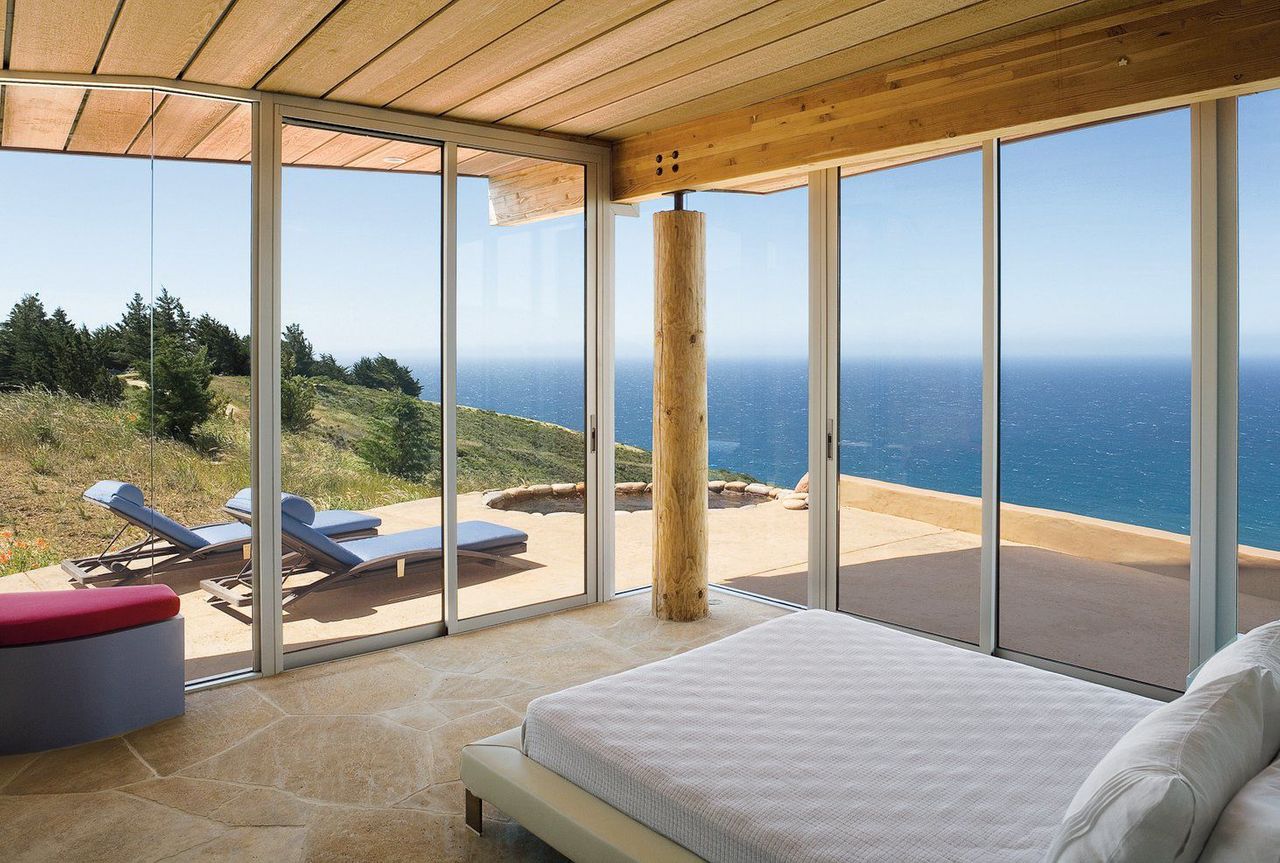
Two walls of floor-to-ceiling windows in the master bedroom frame expansive vistas of the Pacific Ocean.
Inside the 1,900-square-foot house, a wall of windows opens the home to the ocean. Much of the design is centered around keeping the family comfortable and the house temperate. Solar gain through the glass keeps the Treadwells warm, and additional heat gain is garnered through limestone flooring. When the house becomes stuffy, windows oriented to the east and west take advantage of the area’s strong winds and open to allow air to circulate. Concrete countertops also maintain an even temperature, and the reclaimed-wood fireplace provides an additional source of heat.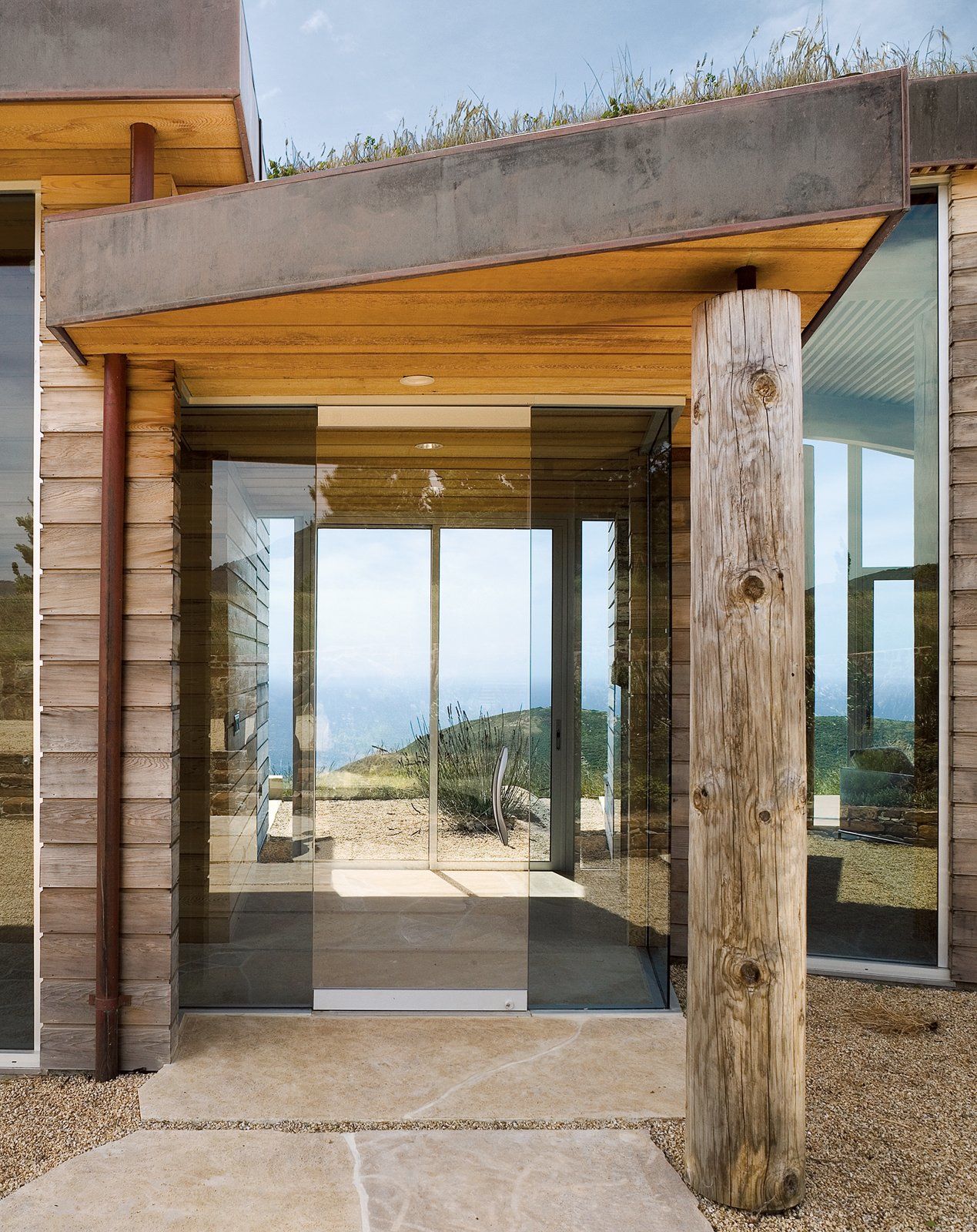
Native grasses, large wood timbers, and plentiful amounts of stone help maintain the sense of "living close to nature" that the Treadwells desired.
Despite its location far from malls and movie theaters, the area provides vast opportunities for ready entertainment for the family’s four adopted children, who range in age from nine months to six years old. "You can’t get bored here," Langka says. "The children love to swim in the hot tub, we go to the beach and fill baggies with shells and rocks, and the tide pools are spectacular." She pauses, then thoughtfully concludes: "I’ve been all around the world, and whenever I come back here, I realize that the Pacific Ocean seen from those cliffs is the most beautiful view on earth."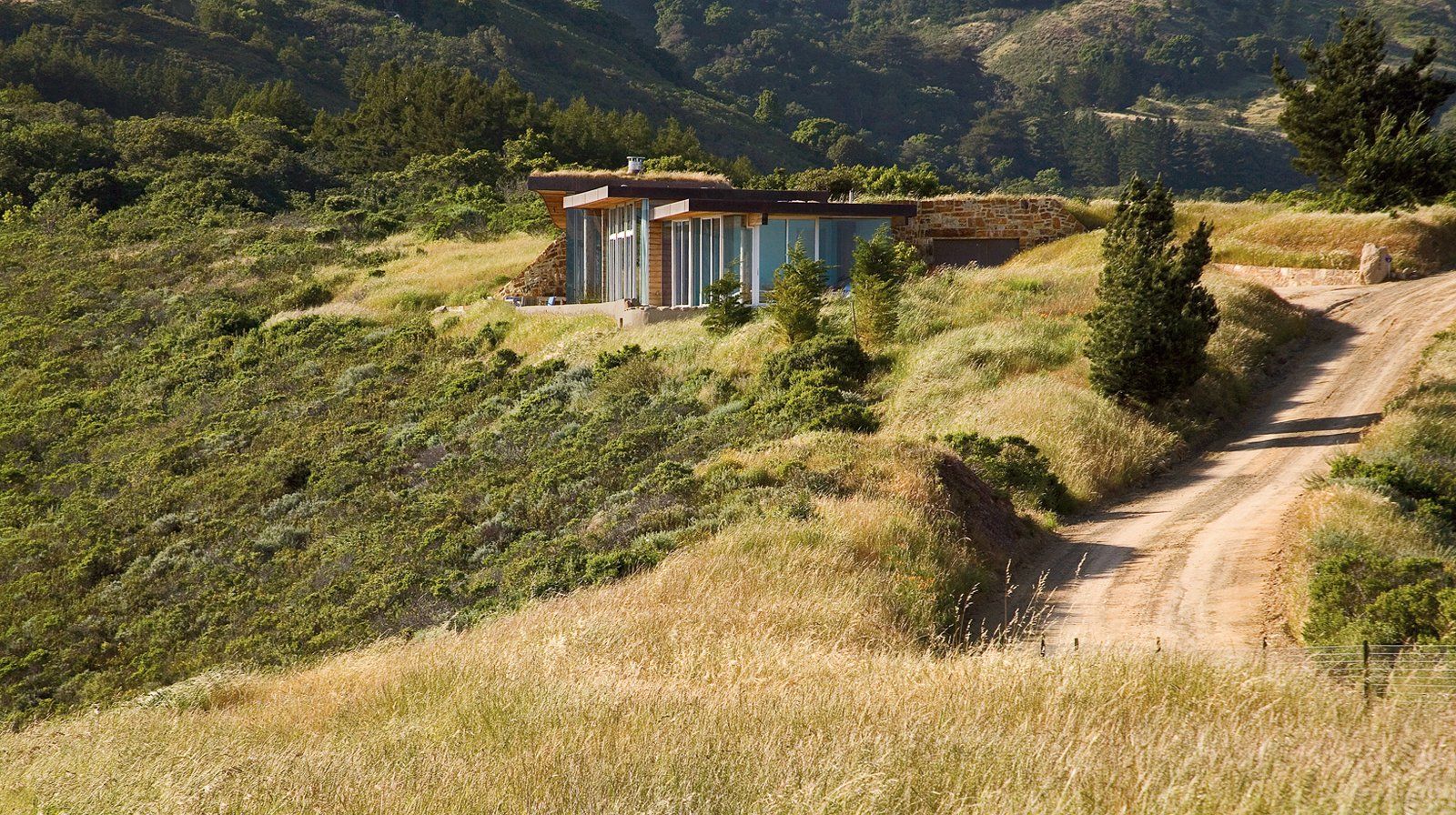
Native grasses, such as red fescue and California oat, dot the landscape surrounding the house.

Tropical Boho Homes With Beautiful Vignettes & Vistas
Two tropical boho home designs, featuring swimming pools, cozy lighting schemes, interior archways, natural accents, and beautiful decor vignettes.


![A Tranquil Jungle House That Incorporates Japanese Ethos [Video]](https://asean2.ainewslabs.com/images/22/08/b-2ennetkmmnn_t.jpg)









